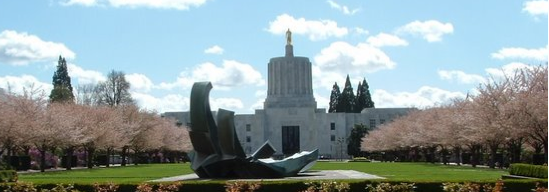 Image via WikipediaNote especially the late start age--this is something that a friend of mine who had been a reading teacher for many years first alerted me to--the Nordic countries don't set kids up for failure the way we do. They start kids in formal schooling much later, so even the slower kids are developed enough to succeed in school.
Image via WikipediaNote especially the late start age--this is something that a friend of mine who had been a reading teacher for many years first alerted me to--the Nordic countries don't set kids up for failure the way we do. They start kids in formal schooling much later, so even the slower kids are developed enough to succeed in school. With later starts, brilliant children stay brilliant (after all, it was the home environment that made them that way in the first place) and the lesser-gifted ones succeed much more often, rather than being singled out for "special attention" and labeled as slow learners at an early age (and, predictably, becoming frustrated and disruptive as a result of being asked to do what they are not yet developmentally ready to do).
The factory school model has many, many sins, but the worst is the way it turns children into failures with such skill.
Worse, the push in America has been to start the process at ever younger ages, continuing the American tradition of deciding that, whatever you're doing, from Vietnam to Iraq, from highway congestion to the war on drugs, whenever it's failing, the only possibility is to do it more and harder.
There is a huge class bias apparent whenever you suggest starting kids in school later--the kinds of people who sit around and talk about ed policy (upper and middle class) inevitably agree that their children would not be harmed by keeping them out of the factory schools longer, but that we need to get the 'at risk' kids into those schools as early as possible, to counter the "educationally deficient" environments they experience at home.
This is perverse--it leaves kids in precisely those environments during the most formative years (0-3 years) and then starts them on the failure track in schools before they've had the extra years needed to catch up and have a chance to succeed. What we need is to bring more resources into those homes without taking the children out of them and putting them in institutions until they are ready to succeed.
WHY DO FINLAND'S SCHOOLS WORK?
[This is a long but consistently interesting report on the Finnish educational system, especially for those struggling with the hypocritically named No Child Left Behind and other peculiarities of American public education. A major difference is that Finland is a much more homogenous culture than the U.S. but there is still much to learn.
SIX DEGREES, FINLAND - Finland has repeatedly been rated top of the class in international comparisons of educational standards, even though spending on education is low, and Finnish children spend much less time in school than kids in other countries. . .
Foreign educationalists are particularly interested because Finland's success does not seem to be related to money: OECD statistics show that Finland spends just 6.1% of its gross domestic product on education, significantly below the OECD average of 6.3%, and well below spending levels in many similarly wealthy countries.
Another factor to discount is the amount of time children spend in the classroom. For a start, Finnish kids only graduate from the kindergarten sandpit to the primary school at age 7. Their schooldays remain short, often ending as early as midday or one o'clock, and their 10-week summer holidays must be the envy of kids all over the world. All in all, Finnish pupils spend an OECD record low total of some 5,523 hours at their desks, compared to the average of 6,847 hours. . .
The results of Finland's brightest students are not significantly above those from other successful countries, but where Finland really shines is in the scores of the lowest performing students. This means that very few Finnish schoolchildren are falling fall through the educational net. . .
Looking after low achievers The Finnish system is designed along egalitarian principles, with few fee-paying private schools, and very little streaming of pupils into different schools or classes according to their exam results. . .
Another factor behind Finland's success could be the narrow focus of the PISA tests. Levels of reading literacy are extremely high in Finland. Many children learn to read before they even start school. Although many foreigners find Finnish hard to learn, the language is so phonetically logical that words are always simple to read and write correctly. . .
The atmosphere in Finnish schools is generally informal. Teachers are given considerable freedom to teach as they see fit, without overbearing supervision or bureaucratic reporting. . .
http://www.6d.fi/index.html/page.2007-02-21.9993404054






No comments:
Post a Comment